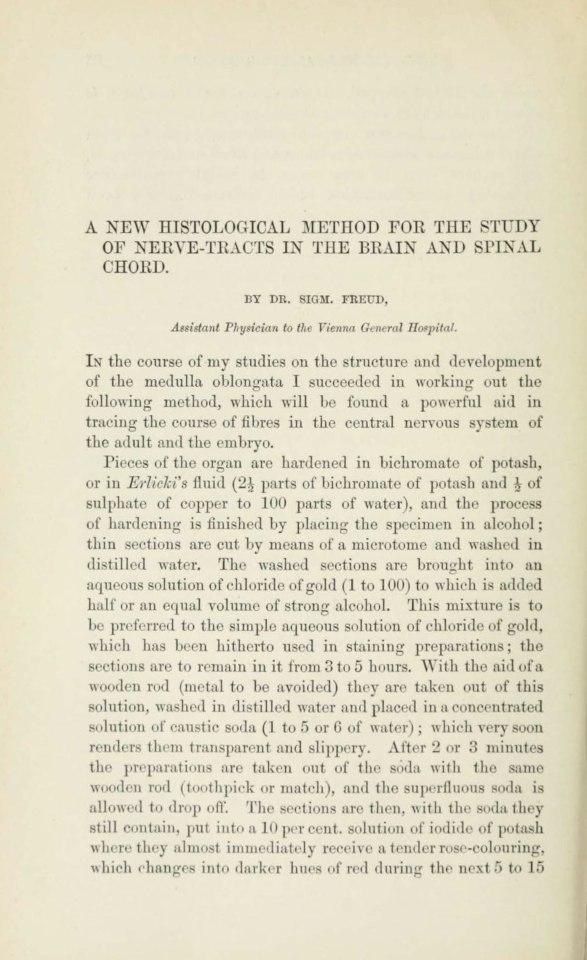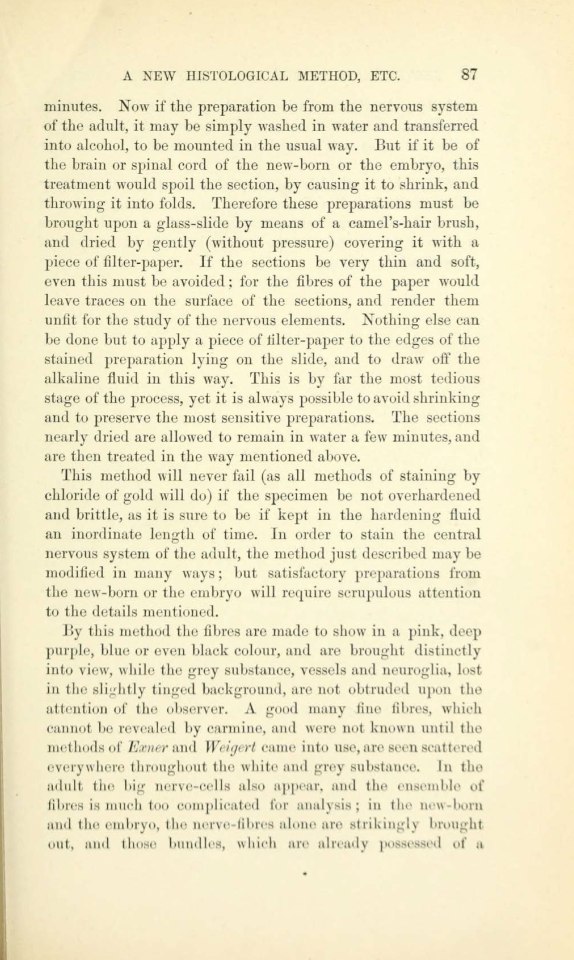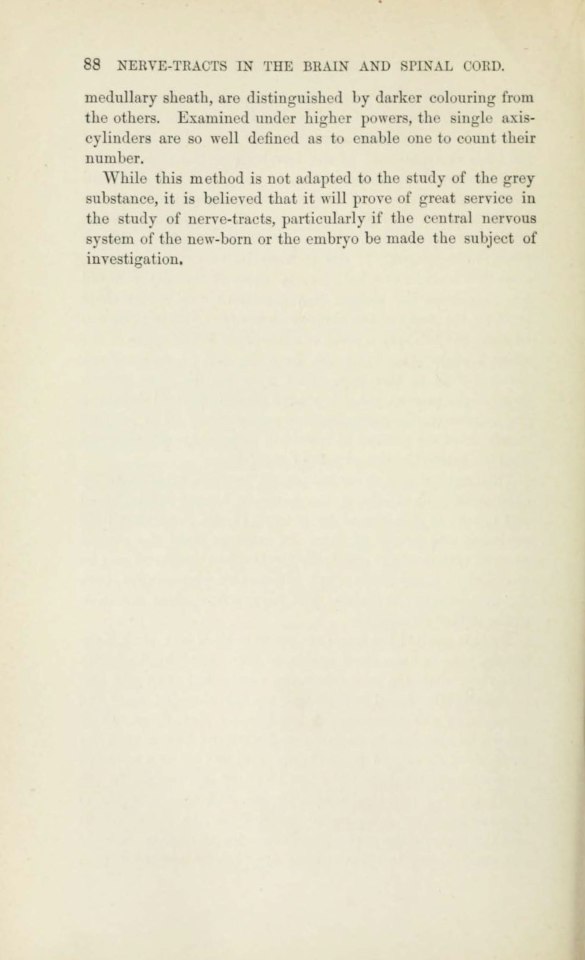S.
A NEW HISTOLOGICAL METHOD
FOR THE STUDY OF NERVETRACTS
IN THE BRAIN
AND SPINAL CHORD.BY DR. SIGM. FREUD,
Assistant Physician to the Vienna General Hospital.
In the course of my studies on the structure and development of the medulla
oblongata I succeeded in working out the following method, which will be
found a powerful aid in tracing the course of fibres in the central nervous
system of the adult and the embryo.Pieces of the organ are hardened in bichromate of potash, or in Erlicki’s
fluid (2½ parts of bichromate of potash and ½ of sulphate of copper to 100
parts of water), and the process of hardening is finished by placing the specimen
in alcohol; thin sections are cut by means of a microtome and washed
in distilled water. The washed sections are brought into an aqueous solution
of chloride of gold (1 to 100) to which is added half or an equal volume of
strong alcohol. This mixture is to be preferred to the simple aqueous solution
of chloride of gold, which has been hitherto used in staining preparations; the
sections are to remain in it from 3 to 5 hours. With the aid of a wooden rod
(metal to be avoided) they are taken out of this solution, washed in distilled
water and placed in a concentrated solution of caustic soda (1 to 5 or 6 of
water); which very soon renders them transparent and slippery. After 2 or
3 minutes the preparations are taken out of the soda with the same wooden
rod (toothpick or match), and the superfluous soda is allowed to drop off.
The sections are then, with the soda they still contain, put into a 10 per cent.
solution of iodide of potash where they almost immediately receive a tender
rose-colouring, which changes into darker hues of red during the next 5 to
15S.
87
minutes. Now if the preparation be from the nervous system of
the adult, it may be simply washed in water and transferred into alcohol, to
be mounted in the usual way. But if it be of the brain or spinal cord of the
new-born or the embryo, this treatment would spoil the section, by causing
it to shrink, and throwing it into folds. Therefore these preparations must
be brought upon a glass-slide by means of a camel’s-hair brush, and dried
by gently (without pressure) covering it with a piece of filter-paper. If the
sections be very thin and soft, even this must be avoided; for the fibres of
the paper would leave traces on the surface of the sections, and render them
unfit for the study of the nervous elements. Nothing else can be done but
to apply a piece of filter-paper to the edges of the stained preparation lying
on the slide, and to draw off the alkaline fluid in this way. This is by far the
most tedious stage of the process, yet it is always possible to avoid shrinking
and to preserve the most sensitive preparations. The sections nearly dried
are allowed to remain in water a few minutes, and are then treated in the way
mentioned above.This method will never fail (as all methods of staining by chloride of gold
will do) if the specimen be not overhardened and brittle, as it is sure to be
if kept in the hardening fluid an inordinate length of time. In order to stain
the central nervous system of the adult, the method just described may be
modified in many ways; but satisfactory preparations from the new-born or
the embryo will require scrupulous attention to the details mentioned.By this method the fibres are made to show in a pink, deep purple, blue or
even black colour, and are brought distinctly into view, while the grey substance,
vessels and neuroglia, lost in the slightly tinged background, are not
obtruded upon the attention of the observer. A good many fine fibres, which
cannot be revealed by carmine, and were not known until the methods of Exner
and Weigert came into use, are seen scattered everywhere throughout the white
and grey substance. In the adult the big nerve-cells also appear, and the ensemble
of fibres is much too complicated for analysis; in the new-born and the
embryo, the nerve-fibres alone are strikingly brought out, and those bundles,
which are already possessed of aS.
88
medullary sheath, are distinguished by
darker colouring from the others. Examined under higher powers, the single
axis-cylinders are so well defined as to enable one to count their number.While this method is not adapted to the study of the grey substance, it
is believed that it will prove of great service in the study of nerve-tracts,
particularly if the central nervous system of the new-born or the embryo be
made the subject of investigation.
86
–88



